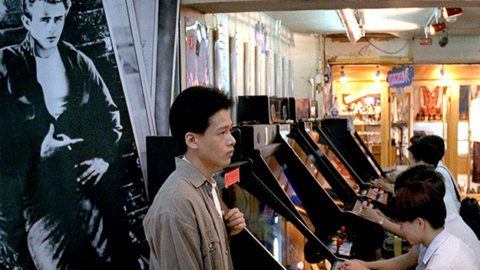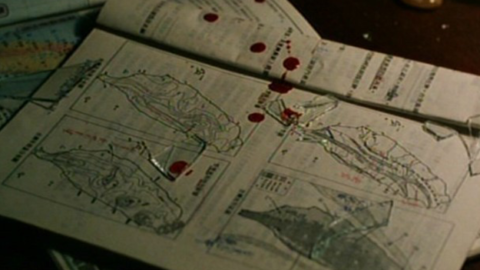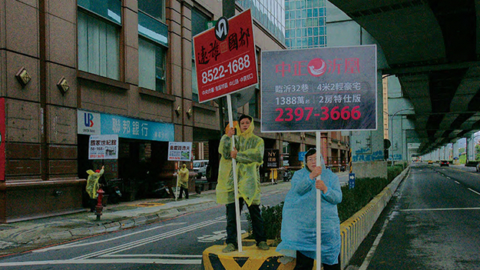Queer & Now & Then: 1994/2015
In this biweekly column, I look back through a century of cinema for traces of queerness, whether in plain sight or under the surface. Read the introductory essay.
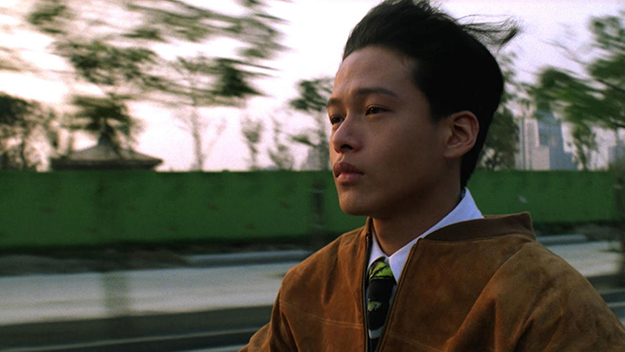
Vive L’Amour (Tsai Ming-liang, 1994)
If we’re lucky, we will encounter a handful of artworks in our lives that hit us like thunderbolts, which communicate something true about the world we live in but which also instantly open up new avenues of awareness and understanding about the medium in which they function. Such eureka moments for me include the first time I saw Matisse’s The Piano Lesson, heard Debussy’s “Arabesque,” or the second time I read Woolf’s To the Lighthouse. (A painting, piece of music, a novel can do that?) In terms of cinema, there’s Kubrick’s 2001: A Space Odyssey and Akerman’s Jeanne Dielman, but there was also, for me, the revelation of Taiwanese director Tsai Ming-liang, and specifically his Vive L’Amour (1994), a film I first watched on a crummy VHS rented from Kim’s Video in 2002.
I had already seen my first Tsai film, What Time Is It There? (2001) at the Quad Cinema and had responded positively and eagerly to the intricate, time-zone-hopping alienation effect experienced by its two lonely characters, a street watch salesman in Taipei and a young woman on a business trip to Paris whose lives barely intersect. Although Vive L’Amour traffics in similar themes of what one might call urban alienation and emotional estrangement, the wedding of its compositional and durational approach—contained single takes of extended duration, some stretched out to agonizing length, others that come across as delightful black-comic sketches—to a more specific narrative of abstracted gay erotic longing was revelatory, as though an art-film aesthetic I at one point may have seen as mannered or rehearsed suddenly felt as natural and real as the world itself.
Films imbued with the anxiety of contemporary urban living were nothing new to me by the time I saw it, yet films by our long-cherished poet of Modern Alienation, Michelangelo Antonioni, for instance, had always felt rather academic in my experience. Part of this might have to do with the sexual undercurrents that define and separate the more traditionally heterocentric work of Antonioni from the vividly if vaguely pansexual perspective that defines Tsai. After all, our physical responses to art are as essential as our intellectual ones—and perhaps underexamined. For Antonioni’s recurring muse, Monica Vitti, there was a fixedness, a sense that, as the locus of our gaze, she was intended to be seen as her director saw her; it’s a far more classical director-subject relationship than that of Tsai and his own constant star, Lee Kang-sheng, a free-floating figure of intrigue, who functions as both the filmmaker’s surrogate and his/our impassive object of desire. Hsiao-kang, Lee’s onscreen persona in all of Tsai’s films, is a vessel through which we experience a mystifying, often unforgiving universe, but he’s also clearly a body on camera. I can’t think of another movie figure who more completely and consistently has been both the purveyor and recipient of an insatiable, desirous hunger.
When discussing queerness in cinema we often talk and write about it in historical and thematic terms. Much of this column, in fact, has revolved around questions of representation, of appearance and disappearance, perception and invisibility, related to how characters function or express themselves onscreen. The marginalization of queer people onscreen throughout film history makes this interrogation necessary but also, sometimes, rather easy, or at least easy to simplify. In other words, is that person—that actor or that character—representing queerness in some legible way, becoming an audience’s symbolic gateway into understanding something about a given film’s perspective on sexuality or identity? Less discussed, as it’s more difficult to get a handle on, is the notion of what creates or defines a queer aesthetic, and how a filmmaker makes that felt to the viewer.
It’s difficult to think of a living filmmaker whose baseline aesthetic is more intrinsically queer, and whose craft has meant more to me than that of Tsai Ming-liang. His commitment to infusing his films with the desperation of erotic longing, and his austere yet enveloping approach to filming both architectural spaces and human bodies, contribute to perhaps the most complete queer visual experience in contemporary cinema. In his films, the tensile sculptural quality of every single image becomes inseparable from the psychosexual intensity that fuels it. Through Tsai’s work, the viewer is made to feel the profound anxiety of living, and through composition, sound, and performance style, is forced into a realm of alienation and hunger that speaks specifically and expressively to its queer filmmaker’s experience.
Like so many of his films, Vive L’Amour, Tsai Ming-liang and Lee Kang-sheng’s second feature together after Tsai’s preternaturally accomplished debut Rebels of the Neon God (1992), is a work defined by unquenchable thirst. Its three characters, which in addition to Lee’s Hsiao-kang include Yang Kuei-mei’s real estate agent May Lin and Chen Chao-jung’s handsome, remote bad boy Ah-jung, form an impossible trio whose missed connections and chronic dissatisfactions are inseparable from the interior spaces that Tsai constructs so scrupulously. Cinema should strive to make environment and character one entity, and few directors are better at this than Tsai, for whom the space of a bedroom—or of a street corner, or of a bathroom stall, or a sauna—communicates more than any line of dialogue ever could.
Vive L’Amour is mostly set in an empty apartment May Lin is in the midst of showing to prospective renters, and which she occasionally uses for afternoon escapades—and, which unbeknownst to her, is also the haunted play space for Hsiao-kang’s mysterious phantom-like stranger. The film finds seemingly endless ways to make spare rooms seem like fully furnished emotional environments, while making Lee both voyeur and object. The socioeconomic reality of Lee’s character is unclear: is he a squatter motivated by financial desperation or simply using the space to nurture his repressed sexual appetites? One thing becomes clear: both May Lin and Hsiao-kang lust after Ah-jung, who stands in for a kind of indifferent, unattainable male archetype. The images of Hsiao-kang, whether hiding under a bed, caressing a watermelon (a recurrent, usually sexualized prop for Tsai), staring through a keyhole, etc., are all pregnant with a kind of earnest, stunted lustfulness, with Lee’s ever expectant face always on the cusp of a satisfaction that never comes.
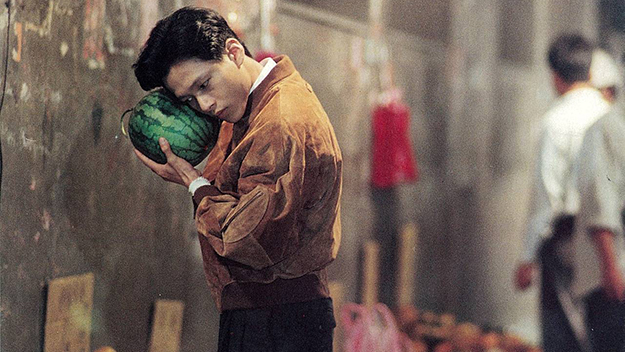
Vive L’Amour (Tsai Ming-liang, 1994)
Regarding the architecture of queer desire, any Tsai film since Vive L’Amour could be discussed at length, particularly his wrenching The River (1997) and Kuala Lumpur–set I Don’t Want to Sleep Alone (2007), which are specifically infused with an aching desperation for sexual connection. Yet there’s a more recent, and surely less seen, film that provides ample evidence that Tsai still matters. No No Sleep (Wu wu mian), from 2015, eloquently distills Tsai’s preoccupations evident from the early ’90s, while also signaling recent shifts in the filmmaker’s career trajectory, and it does all this in a slippery, smoldering 32 minutes. All the Tsai signifiers are in place within No No Sleep, which was shot in Tokyo as part of Tsai’s recent Walker shorts, in which Lee in monk’s robes moves glacially across mostly urban landscapes, a kind of slow-motion performance-art. Inspired by a 7th-century monk named Xuanzang, Lee’s nameless character simply keeps going forward, existing outside of time while being fixed firmly in space.
After a brief establishing shot of clogged crosswalks on Tokyo’s crowded streets, Tsai cuts to an image of a walkway. There seems to be movement in the back of the frame, a dark figure hovering barely perceptibly at the end of the bridge. After a cut, we find ourselves closer to the figure, and we can now make out that it’s Lee’s monk, balancing himself as he ever so gradually puts one foot in front of the other. A series of cuts to different angles on the monk brings him across the short bridge, taking about eight minutes of screen time for him to nearly make it to the other side. Yet before we get the satisfaction of seeing him reach the end of the trip, Tsai drastically cuts to a static shot of a subway rushing by the camera. Suddenly the image is rising and floating to the right, whisked away on a journey through the Tokyo night, the camera mounted in a separate subway car. Here, Tsai gives his viewers the feeling of flight, a rush of graceful movement that allows a tour of the city before the screen is finally overtaken by a high-contrast ghostly white light.
This apparent city symphony segues into more intimate, physical territory. From the overwhelming lights of the train, Tsai cuts to an interior at a bathhouse, a medium shot in which a solitary, naked man (Masanobu Ando) sits on an upside-down bucket while scrubbing and washing himself. The length of the voyeuristic gaze becomes especially pronounced as he rises from his sitting position and finishes bathing, genitals exposed to the camera for the first time. In the next shot, this same man will enter a bath and stretch out next to Lee Kang-sheng, now stripped of his robes and all else. In a nearly four-minute take, the two submerged men lie together in the frame, though it’s unclear how aware they are of one another’s presence; no direct connection is implied, and Lee makes only the subtlest head turn (while Ando dunks his head in the hot pool) indicating that he notices the undeniably attractive other man at all.
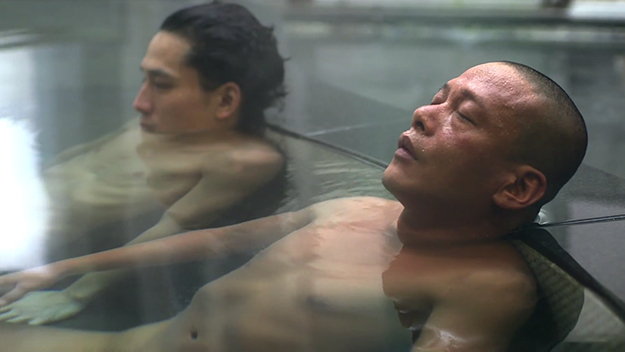
No No Sleep (Tsai Ming-liang, 2015)
As he often does in his films, Tsai seemingly brings two people together only to ensure that they never really seem to connect. After the men bathe peacefully, Tsai charts their individual courses throughout the rest of the establishment: Ando bathes naked again, this time captured in a high angle, as though someone is spying on him from a great height; Lee is in close-up in a sauna, drenched in red light, sweat dripping down his head—at one point he looks ahead at something or someone out of frame, but we never see a reverse shot of what it is before he closes his eyes and rests his head on his hands. Tsai finally leaves them quite definitively separate, each in his own coffin-like sleeping chamber. Though alone, seen only by the viewer, Ando remains a figure of omniscient obsession, his waist barely covered with a sheet as he shifts around in the tiny room, at one point spreading his legs toward the floor-level camera. In his own chamber, Lee remains on his back, his eyes closed—the “walker” is finally still, drifting off to a dream, maybe an erotic reverie, maybe not.
In Tsai’s films, longing is itself beautiful; his portraits of stunted desire rarely leave me feeling bereft because there’s such a sensual fullness to everything he depicts. This is largely due to the palpable adoration he projects onto Lee Kang-sheng. Though he’s often talked about as though he’s a purposeful void, a figure of modern estrangement whose frequently immobile visage appears to give so little, Lee is also the visual and emotional center of all his films, and Tsai’s loving obsession with his constant camera subject gives his work weight and warmth. Off camera, the two men are also partners of a sort; they have lived together for many years, though there’s always been a caginess to the way Tsai and Lee discuss their relationship and whether it’s a romance at all (see 2016’s documentary Afternoon, in which Tsai dances gingerly around the details of their life together). The omnisexual universe that Lee’s characters navigate over the course of Tsai’s filmography also leave questions of identity rather vague, which is perfectly in keeping with the free-floating anxiety around sex and connection that defines his movies.
Tsai has been more direct in the way he discusses his own homosexuality, though he has readily admitted that it’s been a journey to self-acceptance. Such ambivalence plays out in his films, revealing the heart of his cinematic project. In a 2015 interview with BOMB magazine, he said, “In my experience of social reality, queer culture is truly marginalized. There is a dark, secret side to each person’s heart which harbors deep feelings that cannot be discussed.” These secrets, those deep feelings that cannot be discussed, echo through all the spaces of Tsai’s films, from Vive L’Amour to No No Sleep. Those two men lying side by side in a tub—seeing but not seeing each other, feeling but not feeling each other, their eyes closed as we gaze—expresses something true and indefinable about the essential, erogenous nature of cinema itself, its containment, its projection, its indefinable boundaries.
Michael Koresky is the Director of Editorial and Creative Strategy at Film Society of Lincoln Center; the co-founder and co-editor of Reverse Shot; a frequent contributor to The Criterion Collection; and the author of the book Terence Davies, published by University of Illinois Press.



